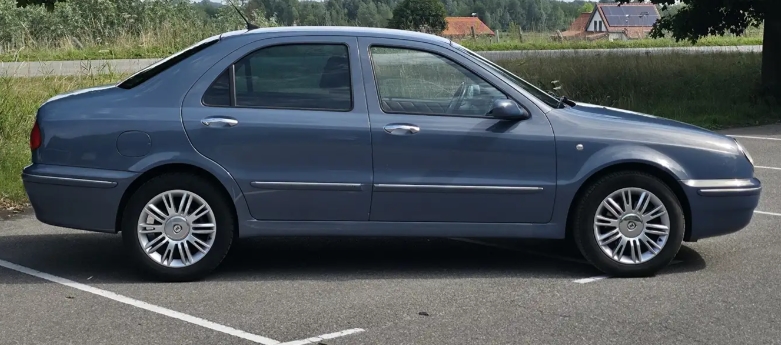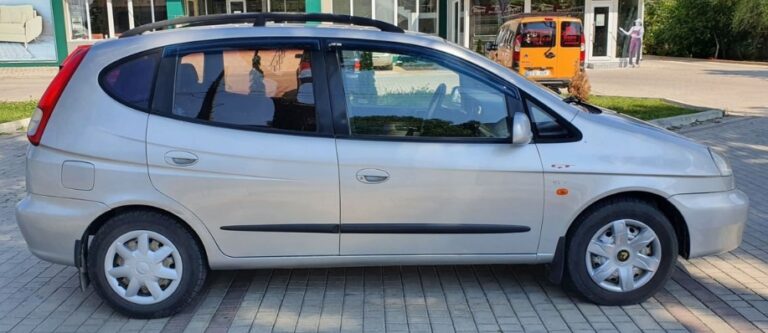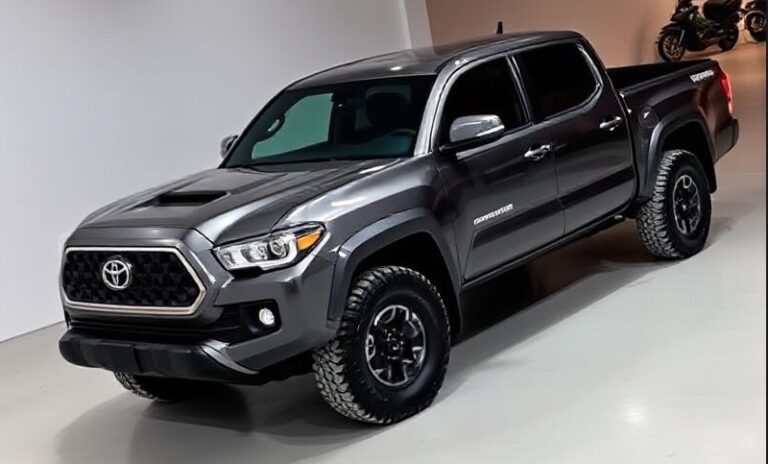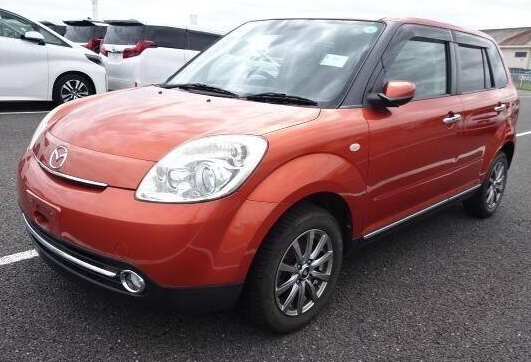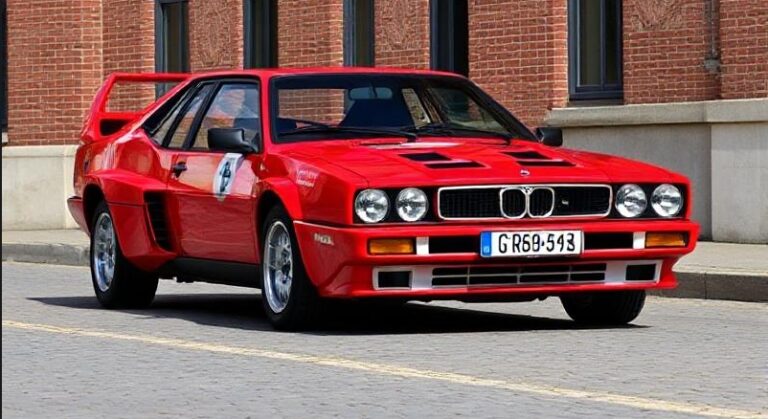The Evolution of the Lancia Lybra: A Symphony of Comfort and a Swan Song for an Era
In the landscape of late 20th-century automotive design, few cars represented such a deliberate and heartfelt statement as the Lancia Lybra. Launched at the tail end of the millennium, it was not merely a successor to the competent but unremarkable Lancia Dedra; it was an attempt to recapture the very soul of Lancia. Forsaking the aggressive, rally-bred persona of the iconic Delta Integrale, the Lybra was a thoughtfully engineered return to the brand’s historic values: elegance, technological innovation, and, above all, uncompromising comfort. This is the story of its evolution, a car that served as both a high-water mark for Italian luxury and a poignant farewell to a segment Lancia would never again occupy.
Genesis: A New Direction on a Familiar Platform
Development of the Lybra, internally codenamed “Type 839,” began in the mid-1990s. Fiat Auto, Lancia’s parent company, was strategically repositioning its brands. Alfa Romeo was to be the sporting marque, Fiat the mass-market champion, and Lancia the purveyor of refined luxury. The Lybra was the standard-bearer for this philosophy.
It was based on a heavily modified version of the “Tipo 2” platform that also underpinned the much-lauded Alfa Romeo 156. However, the shared architecture was where the similarities ended. While the Alfa 156 was engineered for sharp handling and driver engagement, the Lybra’s platform was fundamentally re-engineered for serenity. Lancia’s engineers replaced the 156’s sophisticated double-wishbone front suspension with a conventional MacPherson strut setup, optimized for ride quality and noise suppression. More significantly, they developed a new multi-link rear suspension, dubbed “BLG” (Bracci Longitudinali Guidati), specifically designed to filter out road imperfections and provide a supple, quiet ride. This engineering divergence was a clear statement of intent: the Lybra was built to soothe, not to startle.
This philosophy permeated the car’s design, penned by Mike Robinson at Centro Stile Lancia. The Lybra’s form was a masterclass in retro-futurism, eschewing the sharp, wedged profiles of its contemporaries for soft, flowing lines. The front end was dominated by distinctive, large round headlamps that evoked classic Lancias of the 1950s, like the Aurelia and Appia. The sculpted bonnet and elegant grille established a look of quiet confidence. The car was offered in two body styles from its launch in 1999: a four-door Berlina (sedan) and a five-door Station Wagon (SW). The Berlina featured a distinctive, almost boat-tailed rear, while the SW was praised for its beautifully integrated design that sacrificed little in the way of style for its added practicality.
The interior, however, was the Lybra’s true masterpiece. It was conceived as a luxurious Italian drawing-room on wheels. The dashboard was a symmetrical, sweeping design, available with genuine wood or a technical-looking metallic finish. High-quality materials were used throughout, with most models featuring either plush velour or opulent Alcantara upholstery, a Lancia trademark. At the centre of it all was the innovative ICS (Integrated Control System), which combined audio, climate control, trip computer, and optional satellite navigation into a single colour screen—a feature ahead of its time for this class of vehicle. An optional Bose sound system, custom-designed for the Lybra’s acoustics, further enhanced the premium experience.
.

.
The Lybra Through the Years: Models and Trims (1999-2005)
The Lancia Lybra was produced from 1999 to 2005. Throughout its lifecycle, the model range evolved through subtle engine updates, new powertrain combinations, and the introduction of new trim levels to sustain buyer interest.
Launch Phase (1999-2000)
Upon its market debut in the summer of 1999, the Lybra was offered with a comprehensive range of petrol and diesel engines and three core trim levels: the standard Lybra, LS, and LX.
Engine Lineup (1999):
- 1.6 16v Petrol: A 1581 cc 4-cylinder engine from Fiat’s “Torque” family, producing 103 hp. It served as the entry-point to the range, offering adequate performance.
- 1.8 16v VVT Petrol: A 1747 cc 4-cylinder with variable valve timing, producing a more spirited 131 hp. This was widely considered the sweet spot in the petrol range for its balance of performance and economy.
- 2.0 20v Petrol: The flagship petrol engine was Lancia’s charismatic 1998 cc 5-cylinder, producing 154 hp. Known for its unique, warbling soundtrack, it provided smooth and effortless performance. It could be paired with a 4-speed automatic transmission called the “Comfortronic.”
- 1.9 JTD Diesel: A pioneer of common-rail diesel technology. The 1910 cc 8-valve 4-cylinder engine produced 105 hp and impressive torque, offering excellent fuel economy and refinement.
- 2.4 JTD Diesel: A 2387 cc 10-valve 5-cylinder version of the JTD engine. With 136 hp and a substantial 304 Nm of torque, it was the powerhouse of the range, delivering strong, relaxed performance ideal for long-distance cruising.
Trim Levels (1999):
- Lybra (Base): The entry model was respectably equipped, featuring ABS with EBD, dual front and side airbags, manual air conditioning, the ICS system with a monochrome display, and electric front windows.
- LS (Lusso Superiore): The mid-range trim added significant comfort features, including Alcantara upholstery, dual-zone automatic climate control, alloy wheels, velour floor mats, and electric rear windows. This was the most popular trim level.
- LX (Lusso Extra): The top-tier LX was the ultimate expression of Lybra luxury. It included the full-colour screen for the ICS, leather or “Madras” leather/Alcantara combination upholstery, a wood-trimmed steering wheel and gear knob, cruise control, and often the Bose sound system as standard.
Mid-Life Updates and New Variants (2000-2003)
As the new millennium began, Lancia introduced a series of important updates to keep the Lybra competitive.
- 2000: The power of the 1.9 JTD was increased from 105 hp to 110 hp. The 2.0 20v petrol engine was revised, with output slightly reduced to 150 hp to meet new Euro 3 emissions standards, but with improved torque delivery.
- 2001: The 1.9 JTD was updated again, now producing 115 hp, making it an even more compelling proposition.
- 2002: The most significant update came to the 2.4 JTD engine. It was upgraded with Unijet multi-injection technology and a variable-geometry turbocharger, boosting its output to a formidable 150 hp and 308 Nm of torque. This made the 2.4 JTD 150 hp the most powerful and desirable engine in the Lybra lineup.
Alongside these mechanical changes, new special editions and trim levels were introduced to broaden the car’s appeal.
- Intensa (c. 2001): Aimed at a slightly younger demographic, the Intensa trim offered a sportier, more contemporary aesthetic. It replaced the traditional wood and chrome with dark grey “Masaccio” Alcantara upholstery, a “titanium-look” dashboard finish, darkened headlight internals, and unique 16-inch alloy wheels. It was typically paired with the more powerful engines like the 1.8 petrol and the updated JTDs.
- Emblema (c. 2003): Introduced towards the end of the Lybra’s life, the Emblema became the new flagship model, superseding the LX. It represented the pinnacle of Lybra luxury, featuring exclusive two-tone leather and Alcantara interiors, special multi-spoke alloy wheels, and a comprehensive list of standard equipment, including satellite navigation and the Bose sound system. The Emblema was the final, most complete version of the Lybra vision.
Final Years and Discontinuation (2004-2005)
In its final years, the Lybra’s range was simplified. Production focused primarily on the popular and highly efficient 1.9 JTD 115 hp and the powerful 2.4 JTD 150 hp models, as market demand had shifted decisively towards diesel. The petrol engines, particularly the thirsty 5-cylinder, were gradually phased out in most markets.
Production of the Lancia Lybra ceased in 2005, with some remaining stock being registered into 2006. It was a quiet end for a car that had been born with such a clear and noble mission.
Legacy: The Last of its Kind
Commercially, the Lancia Lybra was not the success Fiat had hoped for. It sold respectably in its home market of Italy but struggled to compete internationally against the established German rivals like the BMW 3 Series and Audi A4. In a market increasingly obsessed with brand prestige and dynamic handling, the Lybra’s subtle charms and comfort-oriented nature were often overlooked. Its retro design, while elegant, was polarizing, and the Lancia brand simply lacked the cachet to lure buyers away from its German competitors.
Yet, to dismiss the Lybra as a failure is to miss the point. It was a car of immense character and integrity. It was exceptionally well-built, with interior quality that shamed many more expensive rivals. Its ride comfort was, and remains, sublime. For those who understood and appreciated its mission, the Lybra was a deeply satisfying car to own and drive.
Today, the Lancia Lybra is remembered as the last true Lancia sedan—the final link in a chain of elegant, comfortable, and technically interesting cars stretching back decades. It represents a lost future for a brand that chose to champion comfort over cornering speeds, and elegance over aggression. It was a beautifully executed symphony of traditional values, a swan song for an era of Italian motoring that has, sadly, passed into history.
